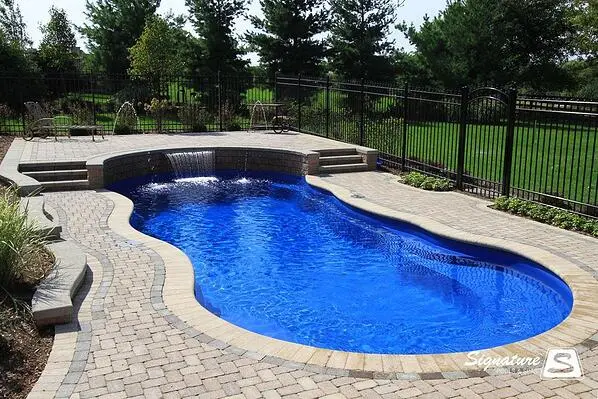Brick pavers are amongst the strongest decking materials available in the marketplace. Thus, residential pools that use these paver materials as a primary decking option require less maintenance and upkeep than other alternatives. But the top reason why any outdoor pool owner should opt for these pavers is that it provides a slip-resistant surface to the water and minimize the chances of injuries or accidents around the swimming pool area. Brick Paver Pool Deck also provides a natural look and aesthetic appeal to the surroundings. You can get your hands on beautiful designs, colors, and textures while using these materials, which can enhance the overall value of your property.

Several factors need to be taken into consideration while installing a brick paver swimming pool deck. First and foremost, you need to dig a deep hole in your yard so that the pavers can be securely laid and leveled. The depth of the hole depends on the size of the patio or pool deck that requires to be constructed. After the ground has been excavated, the paver materials need to be leveled out. Once the surfaces are level, it is necessary to lay the paver stones evenly across the area. Laying them over a wooden deck provides a perfect look.
Nowadays, Efflorescence is used to make brick pavers look like travertine, granite, or marble. Efflorescence is a type of limestone, which comes in different forms such as clays, granites, and even slate. While using Efflorescence, you need to ensure that the process does not damage the stone’s quality by excessive scrubbing. To make the surface of travertine or granite more durable, it is better to use sealants and waxes.
Travertine and Marble Tumbled Decks: Many years have been spent on creating beautiful tumbled decking for a unique outdoor setting. It is not easy to create this design because of its uniqueness. It is also tough to maintain it because of the need for regular polishing and treating. Therefore, many years of experience are required to undertake this task.
Brick Pavers: For people who want a classic pool deck, natural stone is used. However, it is more expensive than travertine. However, it has a unique beauty because of its uniformity and polished look. Natural stone is also very hard-wearing. Therefore, many pool owners opt for this natural stone option because it is cost-effective than travertine and marble.
Brick Paver Decking: Although brick pavers provide a classic, natural look, they need regular cleaning. The dirt that accumulates due to wetness and foot traffic is very tough to remove. In addition to this, there is also a requirement to remove the debris from the base material because it tends to erode. Despite this, brick pavers require less maintenance than travertine and marble. It is known to maintain its color and texture and also withstand the onslaught of bugs, algae, fungi, mildew, and rust. This means it can be left in the open throughout the year.
Concrete Pool Decking: For a variety of reasons, concrete is preferred over other options. It is more durable, requires little maintenance, and is available at affordable rates. The major downside of concrete is its susceptibility to weather damage. Once the concrete starts weathering, it becomes vulnerable to cracking, chipping, and crumbling. Some brick pavers do not require any maintenance, while others might require repaving every few years.
The choice between travertine vs. brick surfaces depends on your budget and preference. Both options are suitable for all types of pools – public or private. However, keep in mind that brick surfaces are more resilient to fire and termites. Travertine is more suited for smaller patios and is costlier. Depending on your budget and preferences, you can get a contractor to install either one or the other.